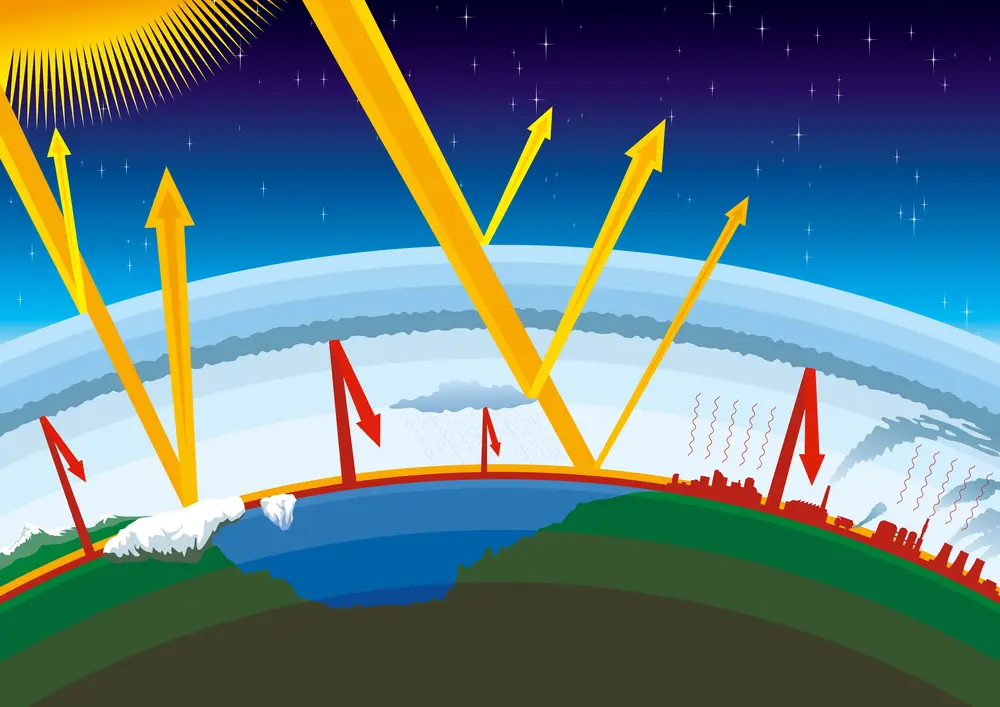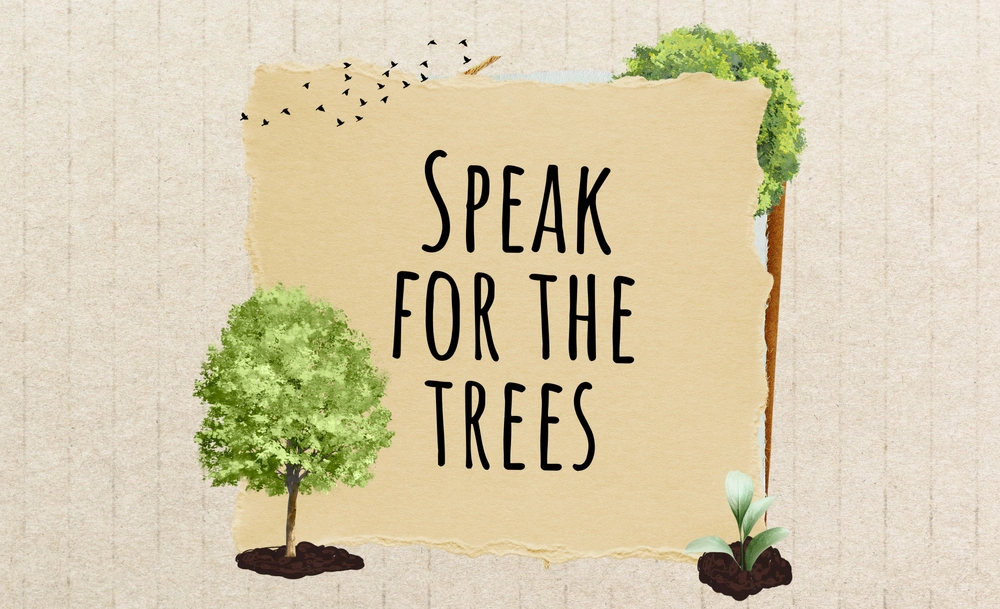Greenhouse Effect Paragraph for hsc, ssc and in 100-500 words

Greenhouse Effect Paragraph in 300 Words for HSC
The greenhouse effect is a natural process that occurs in the Earth’s atmosphere, responsible for keeping the planet warm enough to support life. The greenhouse effect happens when certain gases, known as greenhouse gases, trap heat in the Earth’s atmosphere. These gases include carbon dioxide, methane, and water vapor. Solar radiation from the sun passes through the Earth’s atmosphere and reaches the planet’s surface, where it is absorbed and then re-radiated back into the atmosphere as heat. Some of this heat is then trapped by greenhouse gases in the atmosphere, which prevent it from escaping into space. As a result, the Earth’s temperature remains within a range that is suitable for life. However, human activities, such as burning fossil fuels and deforestation, have increased the concentration of greenhouse gases in the atmosphere, leading to an enhanced greenhouse effect. This increased greenhouse effect causes more heat to be trapped in the Earth’s atmosphere, leading to global warming and climate change. The consequences of global warming and climate change are numerous, and they include rising sea levels, more frequent and severe heatwaves, droughts, wildfires, and hurricanes. These changes also affect ecosystems and wildlife, as well as human health and the global economy. To mitigate the effects of the enhanced greenhouse effect, individuals, governments, and organizations must take action to reduce greenhouse gas emissions. This can be achieved through the use of renewable energy sources, such as wind and solar power, and the implementation of energy-efficient practices in industries and households. Additionally, reforestation efforts and sustainable agriculture practices can help reduce greenhouse gas emissions and sequester carbon in soil and vegetation. The greenhouse effect is a natural process that is necessary for life on Earth. However, human activities have disrupted this balance, leading to an enhanced greenhouse effect and global warming. To address this issue, we must take action to reduce greenhouse gas emissions and mitigate the effects of climate change.
Greenhouse Effect Paragraph in 250 Words for SSC
The greenhouse effect is a natural process that occurs in the Earth’s atmosphere. It is responsible for keeping the planet warm enough to support life. The process occurs when certain gases, called greenhouse gases, trap heat in the Earth’s atmosphere. These gases include carbon dioxide, methane, and water vapor. The greenhouse effect works by allowing solar radiation from the sun to pass through the Earth’s atmosphere and reach the planet’s surface. The energy is then absorbed and re-radiated back into the atmosphere as heat. Some of this heat is trapped by the greenhouse gases in the atmosphere, preventing it from escaping into space. This trapped heat helps to regulate the Earth’s temperature within a range that is suitable for life. However, human activities, such as burning fossil fuels and deforestation, have increased the concentration of greenhouse gases in the atmosphere, leading to an enhanced greenhouse effect. This increase causes more heat to be trapped in the Earth’s atmosphere, resulting in global warming and climate change. The consequences of global warming and climate change include rising sea levels, more frequent and severe heat waves, droughts, wildfires, and hurricanes. These changes affect ecosystems and wildlife, as well as human health and the global economy. To mitigate the effects of the enhanced greenhouse effect, individuals, governments, and organizations must take action to reduce greenhouse gas emissions. This can be achieved through the use of renewable energy sources, such as wind and solar power, and the implementation of energy-efficient practices in industries and households. Additionally, reforestation efforts and sustainable agriculture practices can help reduce greenhouse gas emissions and sequester carbon in soil and vegetation. By reducing greenhouse gas emissions, we can help to slow down the effects of global warming and climate change, protecting the planet for future generations.
Greenhouse Effect Paragraph in 200 Words for Class 8
The greenhouse effect is a natural process that occurs in the Earth’s atmosphere, responsible for maintaining the planet’s temperature within a range suitable for life. This process occurs when certain gases, called greenhouse gases, trap heat in the Earth’s atmosphere, including carbon dioxide, methane, and water vapor. The process allows solar radiation from the sun to pass through the Earth’s atmosphere and reach the planet’s surface, where it is absorbed and then re-radiated back into the atmosphere as heat. Some of this heat is trapped by greenhouse gases, preventing it from escaping into space and maintaining the Earth’s temperature. However, human activities, such as burning fossil fuels and deforestation, have increased the concentration of greenhouse gases in the atmosphere, leading to an enhanced greenhouse effect. This increase causes more heat to be trapped in the Earth’s atmosphere, resulting in global warming and climate change. To mitigate the effects of the enhanced greenhouse effect, individuals, governments, and organizations must take action to reduce greenhouse gas emissions by using renewable energy sources, implementing energy-efficient practices, and promoting sustainable agriculture and forestry. By taking action to reduce greenhouse gas emissions, we can help to slow down the effects of global warming and climate change, protecting the planet and its inhabitants.
Greenhouse Effect Paragraph in 150 Words for Class 7
The greenhouse effect is a natural process that occurs when certain gases, called greenhouse gases, trap heat in the Earth’s atmosphere, including carbon dioxide, methane, and water vapor. This process allows solar radiation from the sun to pass through the Earth’s atmosphere and reach the planet’s surface, where it is absorbed and then re-radiated back into the atmosphere as heat. Some of this heat is trapped by greenhouse gases, preventing it from escaping into space and maintaining the Earth’s temperature within a range suitable for life. However, human activities, such as burning fossil fuels and deforestation, have increased the concentration of greenhouse gases in the atmosphere, leading to an enhanced greenhouse effect. This increase causes more heat to be trapped in the Earth’s atmosphere, resulting in global warming and climate change. To mitigate the effects of the enhanced greenhouse effect, individuals, governments, and organizations must take action to reduce greenhouse gas emissions by using renewable energy sources, implementing energy-efficient practices, and promoting sustainable agriculture and forestry. By taking action to reduce greenhouse gas emissions, we can help to slow down the effects of global warming and climate change, protecting the planet and its inhabitants.
Greenhouse Effect Paragraph in 100 Words for Class 6
The greenhouse effect is a natural process that occurs when certain gases, called greenhouse gases, trap heat in the Earth’s atmosphere, including carbon dioxide, methane, and water vapor. This process allows solar radiation from the sun to reach the planet’s surface, where it is absorbed and then re-radiated back into the atmosphere as heat. Some of this heat is trapped by greenhouse gases, maintaining the Earth’s temperature within a range suitable for life. However, human activities, such as burning fossil fuels and deforestation, have increased greenhouse gas concentrations, resulting in global warming and climate change. To mitigate these effects, we must reduce greenhouse gas emissions through renewable energy sources, energy efficiency, and sustainable agriculture and forestry.
Greenhouse Effect Paragraph in 500 Words
The greenhouse effect is a natural process that occurs in the Earth’s atmosphere, responsible for maintaining the planet’s temperature within a range suitable for life. This process occurs when certain gases, called greenhouse gases, trap heat in the Earth’s atmosphere. These gases include carbon dioxide, methane, and water vapor.
The greenhouse effect works by allowing solar radiation from the sun to pass through the Earth’s atmosphere and reach the planet’s surface. The energy is then absorbed and re-radiated back into the atmosphere as heat. Some of this heat is trapped by the greenhouse gases in the atmosphere, preventing it from escaping into space. This trapped heat helps to regulate the Earth’s temperature within a range that is suitable for life.
The greenhouse effect is a natural process that has been present on Earth for millions of years, and it is necessary for life on our planet. Without the greenhouse effect, the Earth would be too cold to support life. However, human activities, such as burning fossil fuels and deforestation, have increased the concentration of greenhouse gases in the atmosphere, leading to an enhanced greenhouse effect.
This increase in greenhouse gas concentrations causes more heat to be trapped in the Earth’s atmosphere, resulting in global warming and climate change. As the Earth’s temperature rises, it causes a variety of environmental and social impacts, including rising sea levels, more frequent and severe heatwaves, droughts, wildfires, and hurricanes. These changes affect ecosystems and wildlife, as well as human health and the global economy.
One of the most significant contributors to the enhanced greenhouse effect is the burning of fossil fuels, such as coal, oil, and gas, for energy. When fossil fuels are burned, they release carbon dioxide and other greenhouse gases into the atmosphere. The clearing of forests and other natural landscapes also contributes to the enhanced greenhouse effect, as trees absorb carbon dioxide during photosynthesis.
To mitigate the effects of the enhanced greenhouse effect, individuals, governments, and organizations must take action to reduce greenhouse gas emissions. This can be achieved through the use of renewable energy sources, such as wind and solar power, and the implementation of energy-efficient practices in industries and households. By transitioning to renewable energy sources, we can reduce our reliance on fossil fuels and decrease our greenhouse gas emissions.
Additionally, reforestation efforts and sustainable agriculture practices can help reduce greenhouse gas emissions and sequester carbon in soil and vegetation. Forests are natural carbon sinks that absorb carbon dioxide from the atmosphere during photosynthesis, storing it in the trees and soil. Sustainable agriculture practices, such as reducing tillage and using cover crops, can also help to sequester carbon in the soil.
In addition to reducing greenhouse gas emissions, we must also adapt to the impacts of climate change that are already happening. This includes investing in infrastructure that can withstand more extreme weather events, such as flooding and droughts, as well as developing new technologies that can help us adapt to a changing climate.
In conclusion, the greenhouse effect is a natural process that is necessary for life on Earth. However, human activities, such as burning fossil fuels and deforestation, have increased the concentration of greenhouse gases in the atmosphere, leading to an enhanced greenhouse effect and global warming. To mitigate the effects of the enhanced greenhouse effect, we must reduce greenhouse gas emissions through the use of renewable energy sources, energy efficiency, and sustainable agriculture and forestry. By taking action to reduce greenhouse gas emissions and adapt to the impacts of climate change, we can protect the planet and its inhabitants.
Key Points for Greenhouse Effect Paragraph
What is the greenhouse effect?
The greenhouse effect is a natural process in which certain gases in the Earth’s atmosphere, called greenhouse gases, trap heat and prevent it from escaping into space. This process helps to regulate the Earth’s temperature within a range that is suitable for life.
What are greenhouse gases?
Greenhouse gases are gases that trap heat in the Earth’s atmosphere. The most common greenhouse gases include carbon dioxide, methane, and water vapor.
What is the enhanced greenhouse effect?
The enhanced greenhouse effect occurs when human activities, such as burning fossil fuels and deforestation, increase the concentration of greenhouse gases in the atmosphere. This increase causes more heat to be trapped in the Earth’s atmosphere, resulting in global warming and climate change.
What are the impacts of the enhanced greenhouse effect?
The impacts of the enhanced greenhouse effect include rising sea levels, more frequent and severe heatwaves, droughts, wildfires, and hurricanes. These changes affect ecosystems and wildlife, as well as human health and the global economy.
What can we do to reduce greenhouse gas emissions?
We can reduce greenhouse gas emissions by using renewable energy sources, implementing energy-efficient practices, promoting sustainable agriculture and forestry, and reducing our reliance on fossil fuels.
What is the Paris Agreement?
The Paris Agreement is an international treaty signed by nearly every country in the world, with the goal of limiting global warming to well below 2 degrees Celsius above pre-industrial levels and pursuing efforts to limit it to 1.5 degrees Celsius. Countries that signed the agreement have pledged to reduce their greenhouse gas emissions and regularly report on their progress.
What are some natural solutions to the greenhouse effect?
Natural solutions to the greenhouse effect include reforestation and afforestation, which involve planting trees to absorb carbon dioxide from the atmosphere, and sustainable agriculture practices, which can sequester carbon in the soil.









